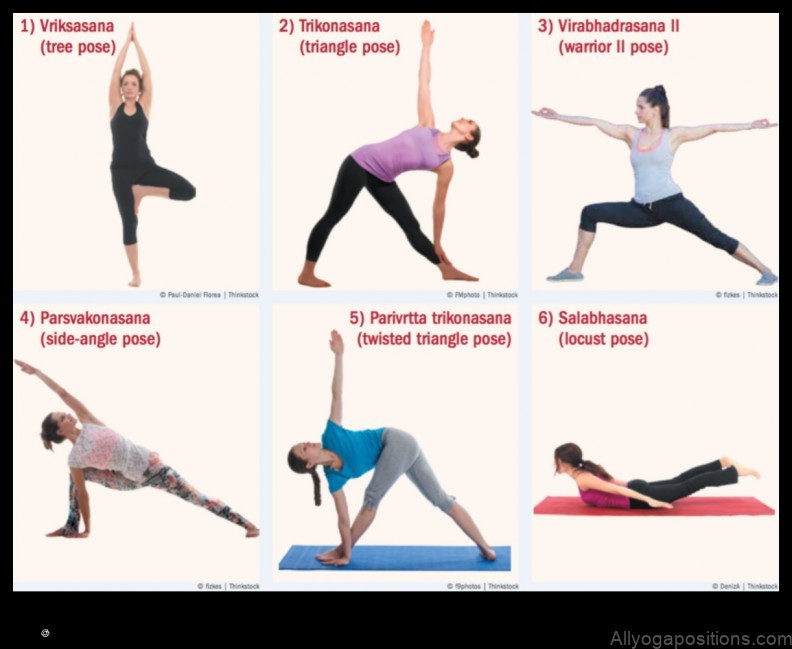
Yoga for Osteoporosis Prevention
Osteoporosis is a condition that causes bones to become weak and brittle, increasing the risk of fractures. Yoga is a low-impact exercise that can help to strengthen bones and improve balance, which can help to reduce the risk of falls and fractures.
There are a number of benefits of yoga for osteoporosis, including:
- Strengthens bones
- Improves balance
- Reduces stress
- Increases flexibility
- Improves mood
If you are interested in trying yoga for osteoporosis prevention, there are a few things you should keep in mind.
- Start slowly and gradually increase the intensity of your practice over time.
- Choose poses that are appropriate for your fitness level and condition.
- Listen to your body and stop if you feel pain.
- Stay hydrated by drinking plenty of water before, during, and after your practice.
There are a number of resources available to help you get started with yoga for osteoporosis prevention. You can find yoga classes at most gyms and community centers, or you can find online classes and resources.
If you have any concerns about yoga for osteoporosis prevention, talk to your doctor before starting a yoga practice.
Here are some resources that you may find helpful:
| Topic | Feature |
|---|---|
| Yoga for Osteoporosis Prevention | – Helps to improve balance and flexibility – Strengthens bones and muscles – Reduces inflammation – Promotes relaxation |
| Osteoporosis Prevention | – Eat a healthy diet rich in calcium and vitamin D – Get regular exercise – Quit smoking – Limit alcohol intake – Avoid excessive caffeine intake |
| Yoga for Bone Health | – Helps to improve bone density – Reduces the risk of falls – Improves posture |
| Bone Health | – Strong bones are essential for good health – Bones provide support and structure to the body – Bones protect vital organs – Bones help to produce red blood cells |
| Exercise for Osteoporosis | – Weight-bearing exercises are the most effective for building bone density – Exercises that strengthen muscles also help to improve bone health – Exercises that improve balance and coordination can help to reduce the risk of falls |

II. What is Osteoporosis?
Osteoporosis is a condition that causes bones to become weak and brittle, increasing the risk of fractures. It is a major public health problem, affecting an estimated 50 million people in the United States.
Osteoporosis is most common in women after menopause, but it can also affect men and people of all ages. Risk factors for osteoporosis include:
- Age
- Gender
- Race
- Family history
- Medications
- Medical conditions
- Lifestyle factors
Osteoporosis is a silent disease, meaning that there are often no symptoms until a fracture occurs. However, there are a number of things that you can do to reduce your risk of developing osteoporosis, including:
- Getting regular exercise
- Eating a healthy diet rich in calcium and vitamin D
- Quitting smoking
- Limiting alcohol intake
- Taking medications to prevent or treat osteoporosis
III. Yoga for Osteoporosis Prevention
Yoga is a mind and body practice that has been shown to have many benefits for overall health, including bone health. Studies have shown that yoga can help to improve bone density, reduce the risk of falls, and improve balance and coordination.
There are a number of ways that yoga can help to improve bone health. For example, yoga can help to increase muscle strength, which can help to support bones and reduce the risk of falls. Yoga can also help to improve flexibility and balance, which can help to prevent falls. Additionally, yoga can help to reduce stress, which can be a risk factor for osteoporosis.
If you are looking for a way to improve your bone health, yoga is a great option. Yoga is a safe and effective way to strengthen your bones and reduce your risk of osteoporosis.

IV. Benefits of Yoga for Osteoporosis
Yoga has been shown to have a number of benefits for people with osteoporosis, including:
- Strengthening bones
- Improving balance
- Reducing pain
- Improving flexibility
- Reducing stress
These benefits can help to improve people’s quality of life and reduce their risk of falls and fractures.
In addition, yoga can help to improve mood and sleep, which can also be beneficial for people with osteoporosis.
How to do Yoga for Osteoporosis
Yoga is a low-impact exercise that can help to improve flexibility, strength, and balance. It can also help to reduce stress and improve mood. These benefits can be helpful for people with osteoporosis, as they can help to reduce the risk of falls and fractures.
There are many different yoga poses that can be beneficial for people with osteoporosis. Some of the most common include:
- Standing poses, such as mountain pose and warrior pose, can help to improve balance and strength.
- Seated poses, such as child’s pose and seated forward bend, can help to stretch the spine and relieve tension.
- Twisting poses, such as seated twist and supine twist, can help to improve flexibility and circulation.
- Inversions, such as shoulder stand and headstand, can help to strengthen the core and improve blood flow to the brain.
When practicing yoga for osteoporosis, it is important to listen to your body and avoid any poses that cause pain. It is also important to start slowly and gradually increase the intensity of your practice over time.
If you have osteoporosis, you should talk to your doctor before starting a yoga practice. Your doctor can help you determine which poses are appropriate for you and can provide you with tips on how to safely practice yoga.
VI. Yoga Poses for Osteoporosis
There are many yoga poses that are beneficial for people with osteoporosis. These poses can help to strengthen the bones, improve balance and flexibility, and reduce pain. Some of the most beneficial poses for osteoporosis include:
* Standing poses, such as mountain pose, warrior pose, and tree pose, help to strengthen the legs and core muscles.
* Forward bends, such as forward fold and seated forward bend, help to stretch the spine and improve flexibility.
* Twists, such as seated twist and revolved triangle pose, help to improve circulation and reduce pain.
* Backbends, such as cobra pose and bridge pose, help to strengthen the back muscles.
* Inversions, such as shoulder stand and headstand, help to improve blood flow to the brain and reduce stress.
It is important to consult with a doctor or yoga instructor before starting any new yoga practice, especially if you have osteoporosis. They can help you to determine which poses are appropriate for you and how to modify them if necessary.
VII. Precautions for Yoga with Osteoporosis
There are a few precautions that you should take if you have osteoporosis and are planning to start a yoga practice. These include:
- Start slowly and gradually increase the intensity of your practice over time.
- Avoid poses that put too much strain on your bones, such as forward folds and deep twists.
- Use props to support your body and protect your joints, such as blocks, bolsters, and straps.
- Listen to your body and stop if you experience any pain.
- Stay hydrated by drinking plenty of water before, during, and after your yoga practice.
If you have any concerns about practicing yoga with osteoporosis, talk to your doctor before starting a yoga practice.
FAQs about Yoga for Osteoporosis
Here are some frequently asked questions about yoga for osteoporosis:
Does yoga help prevent osteoporosis?
There is some evidence that yoga can help prevent osteoporosis. A study published in the journal “Osteoporosis International” found that women who did yoga for 12 weeks had increased bone mineral density in their spine and hips. Another study, published in the journal “The Lancet”, found that women who did yoga for 24 weeks had increased bone mineral density in their spine and femoral neck.
What are the benefits of yoga for osteoporosis?
Yoga can provide a number of benefits for people with osteoporosis, including:
- Increased flexibility
- Improved balance
- Reduced pain
- Improved mood
- Increased strength
What are the precautions for yoga with osteoporosis?
People with osteoporosis should talk to their doctor before starting a yoga practice. Some precautions to consider include:
- Avoid poses that put too much stress on the spine, such as forward bends and backbends.
- Start slowly and gradually increase the intensity of your practice as you get stronger.
- Listen to your body and stop if you feel pain.
What are some yoga poses that are good for osteoporosis?
Some yoga poses that are good for osteoporosis include:
- Cat-cow pose
- Child’s pose
- Downward-facing dog
- Standing forward bend
- Seated twist
Where can I find a yoga class for osteoporosis?
You can find a yoga class for osteoporosis at your local yoga studio or community center. You can also find online classes that are specifically designed for people with osteoporosis.
IX. Conclusion
Yoga is a safe and effective way to improve bone health and reduce the risk of osteoporosis. By incorporating yoga into your regular routine, you can help to strengthen your bones, improve your balance and flexibility, and reduce your risk of falls.
If you have osteoporosis, talk to your doctor about whether yoga is right for you. They can help you create a yoga routine that is safe and effective for your individual needs.
Thank you for reading! I hope this article has been helpful. If you have any questions, please feel free to leave a comment below.
FAQs about Yoga for Osteoporosis
1. What is osteoporosis?
2. How can yoga help prevent osteoporosis?
3. What are some precautions to take when doing yoga with osteoporosis?
Table of Contents
Maybe You Like Them Too
- Side Plank Pose Strengthen Your Core and Improve Your Balance
- Meditation and the Brain How Mindfulness Rewires Your Neurology to Improve Focus, Mood, and Well-being
- Yoga Nidra for Relaxation A Guide to Emotional Resilience
- Radiant Rest Yoga for Relaxation and Renewal
- Yoga for Tennis Players A Balanced Approach to Enhancing Agility
